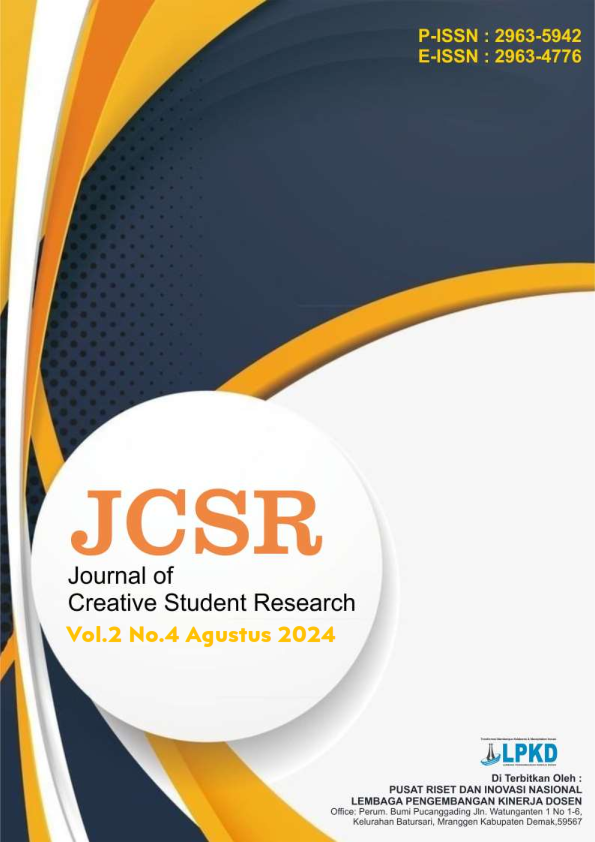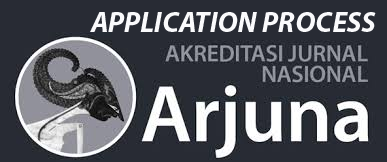Strategi Influencer Marketing HAUS! Indonesia Pada Produk Silky Pudding Dalam Membangun Customer Engagement
DOI:
https://doi.org/10.55606/jcsr-politama.v2i4.4093Keywords:
Influencer Marketing, Consumer Engagement, HAUS Indonesia, Marketing Communication StrategyAbstract
Rapid technological developments have made conventional marketing communications turn digital by utilizing the internet and social media. This is felt and done HAUS! Indonesia to create effective, creative and innovative marketing communications strategies. HAUS! Indonesia implements influencer marketing to achieve marketing campaign objectives, one of which is building customer engagement with silky pudding products. The researcher aims to find out and explain the influencer marketing strategy of HAUS! Indonesia on silky pudding products in building customer engagement. This research uses descriptive qualitative methods and collects data through in-depth interviews with 3 informants who are directly involved in influencer marketing activities at HAUS! Indonesia. The results obtained are HAUS! Indonesia divides the influencer marketing strategy into three stages, namely: 1) Planning, determining goals, segmentation, target market, differentiation and product positioning, planning content and message strategy, selecting media, selecting influencers according to criteria, and determining the schedule for uploading influencer content; 2) Implementation, providing direction in the form of briefs, product delivery, checking, approving, uploading content, and interacting with the audience; 3) Evaluation; carried out on insights, sales figures, ratecards, content, communication with influencers, consumer engagement, challenges and obstacles
Downloads
References
Abdussamad, Z. (2021). Metode Penelitian Kualitatif (1st ed.). Syakir Media Press.
Alassani, R., & Göretz, J. (2019). Product Placements by Micro and Macro Influencers on Instagram. In HCII 2019 (pp. 251–267). https://doi.org/10.1007/978-3-030-21905-5_20
Bansal, R., & Arya, P. B. (2015). Exploring Customer Engagement-A Review of Literature. International Journal of Knowledge and Research in Management and E-Commerce, 5(3). https://www.researchgate.net/publication/318224410_Exploring_Customer_Engagement_-_A_Review_of_Literature
De Veirman, M., Cauberghe, V., & Hudders, L. (2017). Marketing through Instagram influencers: the impact of number of followers and product divergence on brand attitude. International Journal of Advertising, 36(5), 798–828. https://doi.org/10.1080/02650487.2017.1348035
Firmansyah, M. A. (2020). Buku Komunikasi Pemasaran (1st ed.). CV. Penerbit Qiara Media. Frost, R. D., & Strauss, J. (2016). E-Marketing (7th ed.). Pearson Education Limited.
Geyser, W. (2024, February 1). The State of Influencer Marketing 2024: Benchmark Report. Influencer Marketing Hub. https://influencermarketinghub.com/influencer-marketing- benchmark-report/
Gunawan, A. A. P. D., Novel, N. J. A., & Budiyanti, S. A. (2023). Strategi Influencer Marketing Pada Rahsa Nusantara dalam Meningkatkan Brand Awareness. JURNAL LENTERA BISNIS, 12(3), 725. https://doi.org/10.34127/jrlab.v12i3.869
Hariyanti, N. T., & Wirapraja, A. (2018). Pengaruh Influencer Marketing sebagai Strategi Pemasaran Digital Era Moderen. Jurnal Eksekutif, 15(1), 133–146. https://jurnal.ibmt.ac.id/index.php/jeksekutif/article/view/172
Kotler, P., & Amstrong, G. (2007). Prinsip-prinsip Pemasaran (12th ed.). Erlangga.
Lim, W. M., & Rasul, T. (2022). Customer engagement and social media: Revisiting the past to inform the future. Journal of Business Research, 148, 325–342. https://doi.org/10.1016/j.jbusres.2022.04.068
Machfoedz, M. (2010). Komunikasi Pemasaran Modern (1st ed.). Cakra Ilmu.
Mukherjee, R., F, A. P., & Fernandes, D. (2024). Influencer Marketing: Evaluating The Impact
Nugrahani, F. (2014). Metode Penelitian Kualitatif dalam Penelitian Pendidikan Bahasa (1st ed.). Deepublish.
Nurwijayanto, P. R., & Dharmawan, M. M. (2023). Strategi Influencer Marketing dalam Meningkatkan Customer Engagement (Studi Deskriptif Pada Akun Instagram @sotoayamcakson). MARGIN ECO: Jurnal Ekonomi Dan Perkembangan Bisnis, 7(2). https://doi.org/http://dx.doi.org/10.32764/margin.v7i2.4013
Of Social Media Influencers On Consumer Behavior. Migration Letters , 21(S6), 1535– 1546.www.migrationletters.com
Rachmadhaniyati, R., & Sanaji, S. (2021). Pengaruh Social Media Marketing terhadap Customer Engagement dengan Loyalitas Merek dan Kepercayaan sebagai Variabel Mediasi. Jurnal Ilmu Manajemen, 9(3), 1124–1137. https://doi.org/10.26740/jim.v9n3.p1124-1137
Sugiyono. (2018). Metode Penelitian Kualitatif (3rd ed.). Alfabeta.
We Are Social. (2024). Hootsuite (We Are Social): Indonesian Digital Report 2024. Hootsuite. https://wearesocial.com/id/blog/2024/01/digital-2024/
Downloads
Published
How to Cite
Issue
Section
License
Copyright (c) 2024 Journal of Creative Student Research

This work is licensed under a Creative Commons Attribution-ShareAlike 4.0 International License.








